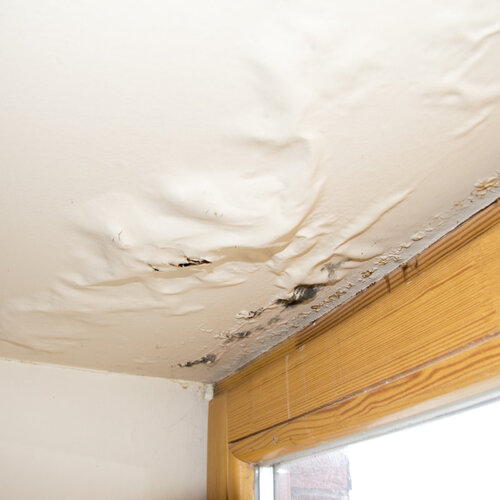Mastering the Six Most Common Water Leaks: Tips for Homeowners
Mastering the Six Most Common Water Leaks: Tips for Homeowners
Blog Article
The content in the next paragraphs in relation to How to detect water leaks in your home is without a doubt attention-grabbing. You should take a look.

Leaks not just cause waste of water but can likewise trigger unnecessary damages to your residence and advertise unwanted natural growth. Water leaks could go unnoticed considering that many of the pipework in our home is concealed. By looking as well as recognizing for everyday situations that trigger leakages, you can secure your residence from future leakages and also unneeded damages. Today, we will look at six leakage triggers that might be creating your pipelines to drip.
Instant temperature changes.
Extreme temperature changes in our pipelines can cause them to broaden and acquire suddenly. This expansion and contraction may trigger splits in the pipelines, particularly if the temperature are below freezing. It would be best if you watched on exactly how your plumbing works. The existence of the formerly discussed conditions often shows a high danger.
Rusty water supply
As time goes by, your plumbing system ages and also deterioration such as rust might start gnawing the pipelines. This might be the root cause of staining or bending on your water pipes. This requires an examination with your plumber instantly. If our plumbing system is old, think about replacing the pipes considering that they go to a greater threat of corrosion than the more recent designs.
Faulty Pipe Joints
The factor at which your pipes attach is regularly the weakest web link in the waterline. Pipe joints can degrade in time, causing water leaks. However, the majority of pipe joints are not easily visible. If you have loud pipelines that make ticking or banging sounds, especially when the hot water is activated, your pipe joints are probably under a great deal of stress. It is recommended to have your plumber examine your system once a year.
Encroaching origins
Many water leakages begin outside the residence rather than inside it. You might notice wet spots or sinkholes in your yard, as well as that might suggest that tree origins are invading water lines triggering water to leak out.
Poor Water Connectors
Sometimes, a leak can be brought on by loose hoses and pipelines that supply your devices. More often than not, moving is what creates the loosened water Links. You might find when it comes to a cleaning device, a hose pipe may spring a leakage due to drinking during the spin cycle. In case of a water connections leakage, you might discover water running straight from the supply line or pools around your home appliances.
Blocked Drains
Blocked drains may be annoying as well as inconveniencing, but they can in some cases wind up creating an overflow leading to rupture pipes. Keep removing any kind of products that may decrease your drains pipes that could block them to prevent such hassles.
All the above are reasons for leakages but not all water leaks result from plumbing leakages; some leakages could come from roofing leakages. All leakages ought to be repaired instantly to prevent water damages.
Leakages not just create waste of water yet can also cause unneeded damages to your home and promote undesirable organic development. By recognizing and looking for daily situations that create leakages, you can safeguard your residence from future leaks and unneeded damages. Today, we will look at 6 leakage triggers that may be creating your pipelines to leak.
At times, a leakage can be caused by loosened tubes and pipes that provide your devices. In instance of a water links leak, you might notice water running straight from the supply line or puddles around your devices.
How To Check For Water Leak In Your Home
How To Check for Leaks
The average household's leaks can account for nearly 10,000 gallons of water wasted every year and ten percent of homes have leaks that waste 90 gallons or more per day. Common types of leaks found in the home are worn toilet flappers, dripping faucets, and other leaking valves. These types of leaks are often easy to fix, requiring only a few tools and hardware that can pay for themselves in water savings. Fixing easily corrected household water leaks can save homeowners about 10 percent on their water bills.
To check for leaks in your home, you first need to determine whether you're wasting water and then identify the source of the leak. Here are some tips for finding leaks:
Take a look at your water usage during a colder month, such as January or February. If a family of four exceeds 12,000 gallons per month, there are serious leaks.
Check your water meter before and after a two-hour period when no water is being used. If the meter changes at all, you probably have a leak.
Identify toilet leaks by placing a drop of food coloring in the toilet tank. If any color shows up in the bowl after 10 minutes, you have a leak. (Be sure to flush immediately after the experiment to avoid staining the tank.)
Examine faucet gaskets and pipe fittings for any water on the outside of the pipe to check for surface leaks.
Undetected water leaks can happen without the home or business owner even realizing. If you suspect a water leak, but not able to find the source. It is time to contact a professional water leak detection service, The Leak Doctor.
How To Find a Water Leak In Your Home
https://www.leakdoctor.com/blog/How-To-Check-For-Water-Leak-In-Your-Home_AE197.html

As a passionate reader on How to Find Water Leaks, I think sharing that excerpt was a smart idea. Sharing is nice. Helping others is fun. Thanks a lot for your time. Please stop by our blog back soon.
Click Here To Read More Report this page